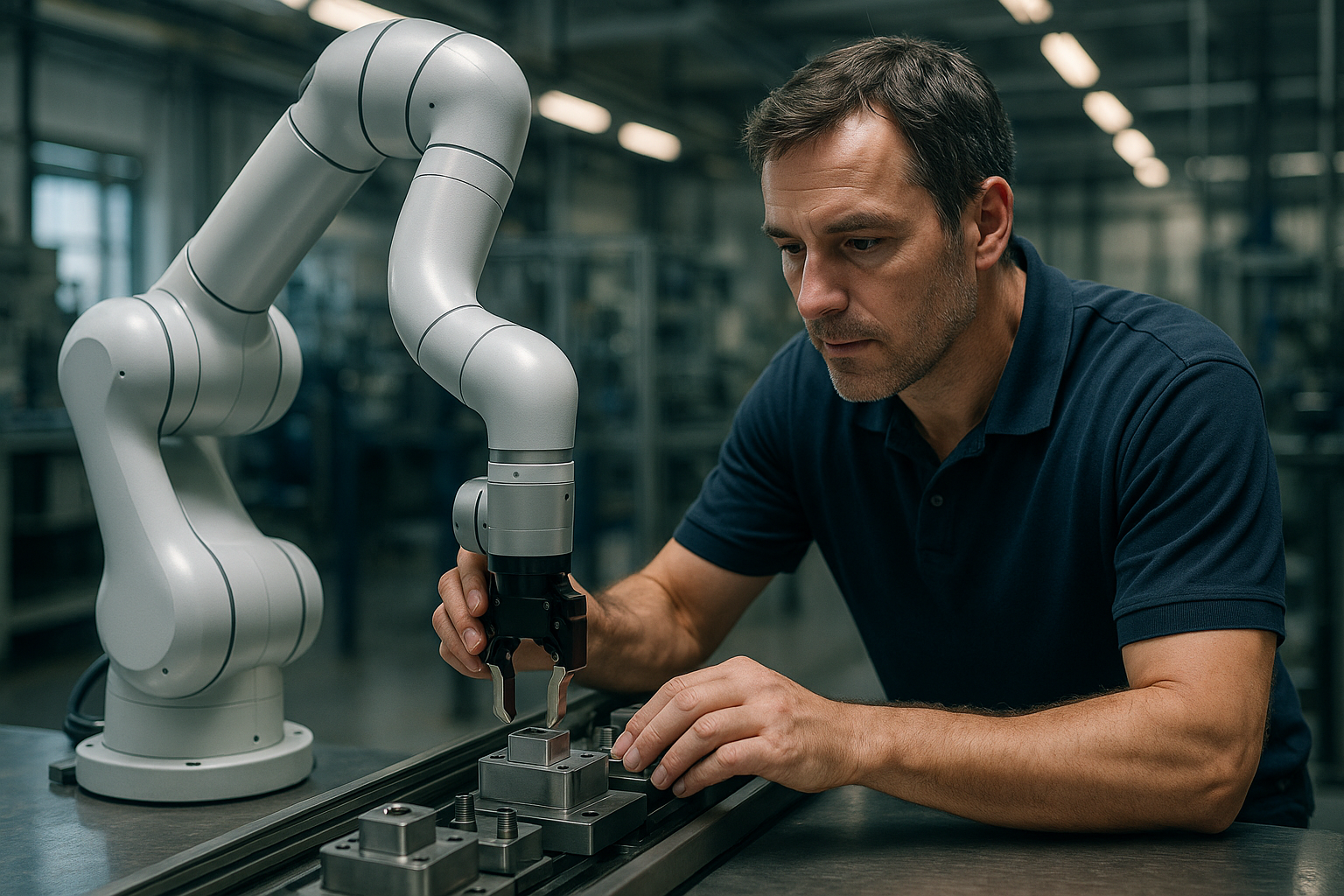Transforming Industrial Processes through Collaborative Robotics
In an era where technology is rapidly advancing, businesses and industries are continuously seeking methods to ride the wave of innovation. One such game-changing development has been the emergence of collaborative robotics, or ‘cobots’. These machines are revolutionizing industrial processes, presenting a myriad of opportunities for businesses to enhance their operations.

The Emergence of Collaborative Robotics
Collaborative robots, a class of robots designed to work alongside humans, were first conceptualized in the late 1990s. However, it wasn’t until the last decade that they gained significant attention. The initial focus was on safety, as traditional industrial robots posed risks when working in close proximity to humans. Over time, the focus shifted to efficiency and versatility, with cobots now able to perform a range of tasks, from assembling products to sorting materials.
Current Trends and Applications in Business
Today, cobots have become a common sight in many industries due to their advanced capabilities and adaptability. For example, in manufacturing, cobots are being used to perform repetitive tasks, freeing up human workers to focus on more complex tasks. In the healthcare sector, cobots assist in surgeries, offering precision and stability beyond human capabilities.
Impact, Benefits, and Challenges of Collaborative Robotics
The impact of cobots on business operations is profound. They reduce operational costs, increase productivity, and ensure a high level of accuracy. Moreover, cobots can work tirelessly, allowing businesses to operate around the clock. However, implementing cobots presents challenges too. Initial investment costs can be high, and there may be a need for employee retraining. Further, there are ongoing discussions about the implications of automation on job security.
Evidence-backed Insights
Research conducted by the International Federation of Robotics suggests that the market for cobots is expected to grow exponentially in the coming years. Businesses that adopt cobots early are likely to gain a competitive edge.
Practical Insights
-
When considering the implementation of cobots, businesses should conduct a cost-benefit analysis to ensure the investment will yield a positive return.
-
It’s crucial to plan and execute employee training programs to ensure the workforce can effectively operate and collaborate with the cobots.
-
Businesses should stay abreast of the latest advancements in cobot technology to maximize their benefits.
Conclusion
Collaborative robotics has become a transformative force in the industrial landscape. Though adoption may present certain challenges, the potential benefits make it a compelling option for businesses. As the technology continues to evolve, it’s anticipated that cobots will become an integral part of business operations, forever changing the landscape of industrial processes.




